As we observe Child Abuse Prevention Month, it’s essential to pause and reflect on our understanding of what child abuse might look like. It’s easy to think of popular movie and television references like suspicious white vans or perhaps unfamiliar adults at playgrounds. However, it’s estimated that nearly 36 percent of offenders are older children or teens. And with more children’s interactions happening online, it’s more important than ever to have a conversation with your child about personal safety and abuse. Prepare yourself for the conversation by understanding the facts and prevention tools.
What the Research Says
Children who are informed about their bodies and who feel comfortable talking openly with a caring adult are less likely to be abused and more likely to disclose abuse if it happens.2
Many parents are reluctant to educate their children about sexual abuse because they view it as an uncomfortable topic to discuss.1
In about 90 percent of sexual abuse cases, children know their offender. Often, it’s someone the family knows and likes, which is why many children are afraid to tell.3
If your child discloses abuse, stay calm and believe them; children rarely lie about abuse.4
How you can Help with the 'KNOW, SEE, RESPOND' Tool
KNOW: Knowing the facts about child abuse helps adults recognize warning signs and prevent it. As parents, caregivers, and trusted adults, we play a key role in protecting children. Learn more about the types of abuse, the signs, and how you can help.
SEE: Media and technology are central to children's lives, but not everything online is beneficial. As a parent or caregiver, you can use tools and resources to ensure their environment, both online and offline, is safe from abuse. Learn more about online safety.
RESPOND: To help prevent child abuse, start important conversations with your child. The Hot Chocolate Talk campaign offers easy guides for parents and caregivers, from toddlers to teens. Learn more and start conversations with your child.
The YMCA of Silicon Valley’s Commitment to Safety
At the YMCA of Silicon Valley, we believe every child deserves a nurturing environment to explore their potential and build lasting memories. Our dedicated staff, volunteers, and community partners work tirelessly to ensure that our programs and facilities are safe spaces for all children. We adhere to the highest child protection and safety standards, incorporating comprehensive policies and practices that prioritize the well-being of the young people in our care.
Child Abuse Prevention Month emphasizes the importance of communities working together to support and strengthen families and prevent child maltreatment. The Y is here to work with you and our community partners to keep our children safe.
1. Wurtele, S. K., & Kenny, M. C. (2010). Partnering with parents to prevent childhood sexual abuse. Child Abuse Review, 19(2), 130–152.
2. Finkelhor, D., & Dziuba-Leatherman, J. (1995). Victimization prevention programs: A national survey of children’s exposure and reactions. Child Abuse & Neglect, 19(2), 129–139.
3. Snyder, H. N. (2000). Sexual assault of young children as reported to law enforcement: Victim, incident and offender characteristics (NCJ 182990). Washington, DC: US Department of Justice, Office of Justice Programs. http://bjs.ojp.usdoj.gov/content/pub/pdf/saycrle.pdf.
4. Summit, R., & Kyrso, J. (1978). Sexual abuse of children: A clinical spectrum. American Journal of Orthopsychiatry 48, 237–249. https://www.secasa.com.au/pages/is-the-child-victim-of-sexualabuse-telling-the-truth/
